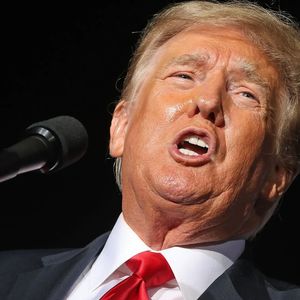Summary Bitcoin is a Strong Buy as fiat currencies weaken and gold's trade becomes increasingly crowded and overvalued. BTC's market cap remains a fraction of gold's, highlighting significant upside potential as digital scarcity gains favor over physical assets. Gold's physical limitations and the digital-native preferences of younger investors position BTC as the future store of value. A generational wealth transfer and growing distrust in fiat accelerate the rotation from gold to BTC, despite regulatory and institutional inertia. Thesis To many HODLers , it’s starting to look like gold is in a hype phase. The signs of a top are there. You’ve seen the clips online of people lining up around city blocks like lemmings and the headlines from around the world. Major banks have helped feed the frenzy, with analysts calling for even higher prices next year. XAUUSD:CUR Gold Spot Price (Seeking Alpha) That’s after spot gold ( XAUUSD:CUR ) broke above $4,300 an ounce and logged its best weekly gain since 2008, only to give it back before the day was over. In my experience over the years, these are textbook signs of late-cycle nerves in a market stuffed with optimists and late-to-the-party buyers. Bank stocks fell too, a tiring but familiar story stirred by that old unwelcome specter of bad loans, proof that credit risk never really leaves the room. While the orange-pilled crowd and the gold bugs bicker over whose money is “sounder,” they’re really on the same team. They both see the same endgame: governments print too much, debt piles up, and currencies die slow deaths, like boiling frogs. Gold and Bitcoin ( BTC-USD ) are protest votes against that decay. The split is in faith: gold is old-world and tangible, and Bitcoin is new-world and digital. As trust in fiat thins out, that divide tells you everything about now. With Bitcoin holding near six figures after a strong run, this piece looks at five reasons a big shift from gold to Bitcoin might be coming. 1. Bitcoin’s Market-cap Discount to Gold is Still Enormous Even after turning a $200 coin into over $100,000 in just over ten years, Bitcoin is still tiny compared to gold; its total value barely makes a dent next to the gold market. Before we get to that, look at the chart below, which shows a shortened version of Bitcoin’s price history, and it tells the same story we’ve seen again and again. I saw several versions of this on social media. This is my more recent take. ( TradingView ) The price swings are massive, and the crashes can be brutal; just look at this year alone, when Bitcoin dropped from a January high of about $109,000 to a low near $75,000 in April. Yet, every time this happens, I see the same comments, usually something along the lines. This time, "it’s so over," it reminds me of the boy who cried wolf, a warning that never quite sticks, because somehow, Bitcoin keeps on climbing higher and higher. At the end of 2013, the value of one Bitcoin was around $200. In the few months leading up to the collapse of the Mt. Gox exchange hack , it was still a relatively insignificant, weird, fringe, niche, experimental notion in the eyes of Main Street. By October of this year, Bitcoin traded around $97,000, roughly 48,500% higher than in 2013, driven by the Trump admin , strong investment through ETFs , more people using it, and a growing global move toward digital assets as a way to store value. Now, let’s turn back to the market cap comps. As of this week, at the time of my research, the Bitcoin/Gold ratio was at 0.07 , meaning Bitcoin’s market cap, around $2 trillion, is just 7% the size of gold’s roughly $30 trillion. In my perspective, one of the cleanest methods for determining the extent to which global capital has favored one kind of hard money over another is to compare the two based on their respective market caps. For the most part, I'd argue that both gold and Bitcoin are primarily monetary assets, not productive ones. Yes, gold is used in industry , but that’s tiny compared to its roughly $30 trillion role as a store of value. Bitcoin gets its value from that same purpose, being a way to hold wealth outside regular money (fiat). So, the market cap of each one shows how much people around the world believe in its ability to keep value safe. The ratio between gold’s and Bitcoin’s market caps basically shows how much people value physical (analog) scarcity versus digital scarcity, and right now, that gap is still massive. Why It Might Not Play Out Yet Ratio extremes point to potential here, not timing. In the real world of investing, after writing over 500 research papers for Seeking Alpha, the idea of “undervalued” can linger for months or never manifest at all in the reasoning of buyers. Big investors are still being careful because Bitcoin’s price swings a lot and there’s still uncertainty about government rules and regulations. Gold’s easy to understand, and thousands of years of trust keep it dominant in crises. If Bitcoin falters in one, the gap could certainly widen before it closes. 2. Gold’s Physical Limits vs. Bitcoin’s Digital Superiority The beauty of gold and its enduring worth have long made it a highly appreciated commodity. Every great empire has stored it away in vaults. But what makes gold strong also makes it inconvenient because it’s heavy and slow to move and fixed in one place. Sending real wealth across borders means using armored trucks, filling out customs forms, and, depending on scale, buying insurance. Bitcoin flipped the old system on its head. It has no borders, moves instantly, and can be split into tiny pieces, down to one hundred-millionth of a single coin. You could send $10 million worth of Bitcoin across the globe in just a few minutes, paying only a few dollars in fees, and the transaction is final. Try doing that with gold. Gold can’t move without trucks, guards (depending on quantity), and paperwork, but Bitcoin moves the second you press “send.” Seeing videos of people lining up outside gold shops feels antiquated. At the same time, Bitcoin owners can send money right from the same phone they use to message friends or pass the time while waiting to buy gold. A main driver of gold's rotation into Bitcoin is that the more difficult and slow it becomes to move or trade gold, the more investors will turn to the asset that fits naturally into a digital system, one they've already accepted. Bitcoin belongs to that future. Gold doesn’t. Counterpoints to Watch Gold’s real, physically speaking, and that's comforting to investors who aren't keen on software and private keys. Bitcoin’s security depends on human behavior and user error. The poster child is James Howells, who lost over $1 billion of it in a landfill. In extreme crises, where survivalists and doomsday preppers win the debate hands down, electricity and connectivity matter because gold’s value survives offline. 3. Fiat’s Long Goodbye: The Hard-Money Rotation Confidence in paper money has been cracking. Institutional investors are sitting on less cash these days, just 3.8% . Meanwhile, global debt looks unstoppable, with $14 trillion added to the ledgers in the first of this year, blowing past $337 trillion . And inflation might look calmer on official charts, but we all know that the dollar still buys less . Real yields barely scrape past zero, and every so-called policy or government fix and solution just means more and more borrowed money. That’s where the rotation argument comes into view. We've been living on a system hooked on the printer; the "brrrr" meme is real, so smart capital is magnetized to what can't be printed. Gold's been that escape hatch, but it’s fallen behind the curve. Measured against M2 , it’s only back to where it was in 2011, fourteen years of going nowhere in real terms. Bitcoin’s different; it’s capped at 21 million , trades nonstop, 24-7, and exists outside the reach of central banks. It’s the only scarce asset you can actually code. Gold doesn’t stand a chance against that. If you buy into the fiat is dying movement, then what it really means is that gold might continue to climb higher and higher, hitting $5000 , maybe going to $10,000 , but the next hard-money shift won’t stop there; it’ll move straight through it and into Bitcoin. It'll be a swap of nostalgia for numbers because, as Elon Musk noted , "Bitcoin is based on energy," and while governments can issue unlimited fiat currency, "it's impossible to fake energy." Dissenting Views Central banks can and will try to stall any kind of systemic collapse for some time by tightening policy and issuing digital currencies. If credit markets lock up, we'd have bank runs, a natural and convenient instinct to grab as much cash as possible, not buy Bitcoin. Panic gravitates towards the most visible, convenient exit and solution. 4. The Crowded Trade: Gold Mania Signals a Coming Rotation Crowded trades rarely end well. History keeps proving the point. I thought it was a fake story the first time I heard of it, the Dutch tulip bubble , driving up prices to the level of homes, only to watch the market implode in a matter of weeks. Then, a few generations later, London investors did the same with the South Sea Company , convinced that Britain had discovered some kind of perpetual profit engine, until it all unraveled and erased that generation's savings. Fast forward to Japan in the late ’80s , pumping stocks and real estate to lunatic levels before it all caved in. It wiped out trillions in paper wealth. My first bubble, in a professional capacity, was the dot-com one in 2000. And then the next big one was the housing crash in 2008, all different venues, all seemingly "new and different this time" but it's the same game play: tulips or websites, consensus, crowding, collapse. That’s where gold is at today, the crowding phase. What used to be the outsider’s hedge has turned into the crowd’s favorite. Analysts keep hiking their targets, and, right on cue, small investors are piling in on those headlines, along with central banks buying more than ever. I'd argue that when the herd starts calling an inflation hedge “risk-free,” the sharp money starts scanning for real asymmetry, and that’s where Bitcoin comes in, the hard asset nobody owns enough of, built on the same anti-fiat logic but with far greater upside. Every Rotation Has Resistance Crowd sentiment can run for years. Calling for a top is half data/logistics, the other half luck . And just because belief tops out doesn’t mean the price has. Bitcoin has had years to "sell" the Average Joe on its true purpose, so it won’t necessarily catch the gold flow right away. Or at all. The rotational shift has been, and could continue, to take its sweet time. Gold still carries centuries of trust and institutional habit, and it's far more easier to explain and understand than Bitcoin. 5. The Demographic Hand-off: From Gold Bugs to the Orange-pilled Younger investors , you know, the ones set to inherit trillions over the next two decades, are digital natives. Everything is apps: their banks are apps, their portfolios live on screens and smartphones that never, ever leave their sides. To them, scarcity isn’t exactly mined from the planet; it’s written in code, as more than half of millennial investors already hold some kind of crypto. Now, compare that with just 8% of boomers . From that angle, it's easy to see that a digital mindset will be the biggest driver of a rotation into Bitcoin, as roughly $84 trillion changes hands by 2045 , according to Cerulli Associates, with Merrill Lynch calling it the ' Great Wealth Transfer ,' and goes even higher at $124 trillion. In other words, we don't need a revolution or some kind of rebellion because the digital routines are habit, routine, and locked in place, with no heavy marketing needed. For the 30-year-something investor five years or a decade from now, moving value across borders or platforms, Bitcoin already fits how they live. Gold will be a relic to them, respected, most likely, but, like, totally obsolete. The Fine Print Generational wealth moves at a crawl. We are horrible , for the most part, at predicting the future, overshooting dramatic changes by decades. It’ll take years before younger investors hold enough capital to tip the scales. Most institutional portfolios are still chained to old benchmarks, models that make room for gold but not Bitcoin. Governments love control. Regulation and tax policy could slow crypto adoption, no matter how fast the demographics tilt in its favor. Final Takeaway Based on the evidence, Bitcoin looks like a Strong Buy . Purely on fundamentals, fiat’s decay is speeding up and gold’s trade is bloated, and while all the optics are on the most recent gains, it’s slow. Add to that a generational handoff already driving capital toward assets that actually live in the digital world, and the gap between Bitcoin’s current size and its potential share of the hard-money market is massive. The long-term rotation, I’d argue, is simple arithmetic.















